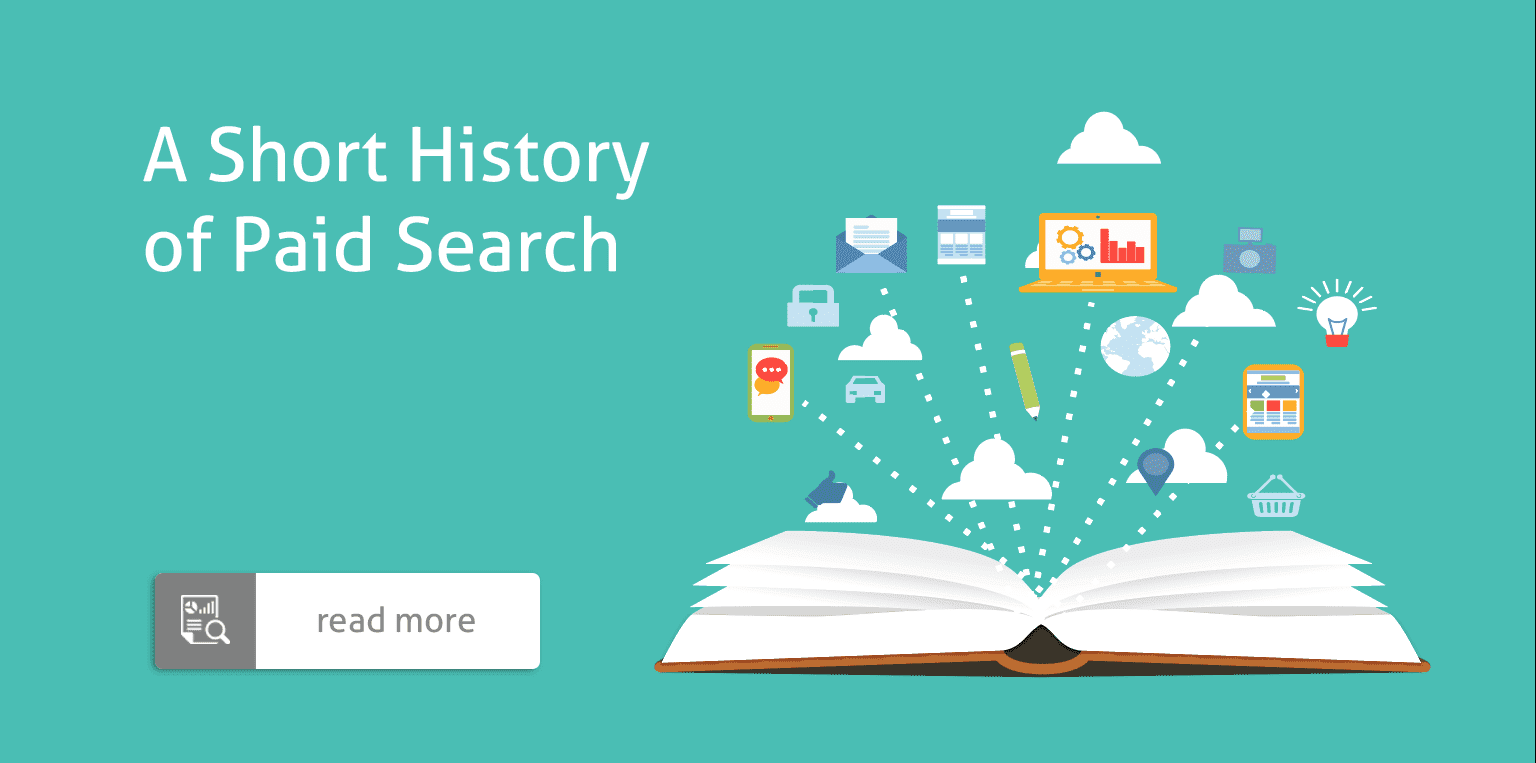Imagine the world with no Google. In the early days of the Internet, the search giant hadn’t quite established its dominion as King of the Web and early Internet was mostly user-generated forum discussions and personal web pages.
Things have evolved significantly since then, with paid advertising creating revenue and ROI possibilities for advertisers on new and evolving platforms.
Let’s take a look at how online paid search has evolved over the years and where it stands to be in the future.
The Early Years
Some of the first ads on the Internet were Yellow Page-style directory listings where for a flat fee, companies could list their business on search engine result pages.
AdWords came on the scene in 2000. For a monthly contract, advertisers could work with Google directly and the company would set up and run the ads. In order to broaden the program and include smaller businesses, the self-service portal was released and the pay-per-click structure was born.
Some other key AdWords moments include:
- 2005: The Google Advertising Professional program was launched. This early version of the AdWords Certification program allowed businesses and consultants to prove their AdWords credentials.
- 2009: Video and local map ads are released.
- 2013: AdWords is optimized to provide better targeting for mobile devices. New conversion analytics were also added to the platform.
Searches evolved from a few million a day, to over 100 billion a month. Not only this, but Google’s revenue shot through the roof when paid search was introduced to the masses. Other platforms caught on to the importance of offering a paid advertising service and soon PPC models were being set up on competing platforms like Bing, Yahoo and AOL.
Prior to 2006, all of Bing and Yahoo’s ads were supplied through a third-party service called Overture. In 2012 after a number of mergers, Bing Ads was launched and a partnership with Yahoo was established. Yahoo has since broken off and AOL swooped in to handle much of Microsoft’s advertising efforts.
It wasn’t long before social media sites were offering advertising platforms to their user base as well:
- Facebook Ads: Facebook’s advertising platform launched in 2006 and allowed big name companies to buy ad space on the site. Unlike Google and Bing, Facebook gave advertisers access to Nielsen data to tailor ads to specific audiences. Now, advertisers can choose from a variety of ad type and conversion goals within the platform.
- Twitter Ads: 2010 was the year Twitter jumped on the advertising bandwagon. The site offered both promoted tweets and promoted trends. The site followed a similar path to Facebook by opening their platform to big spends before releasing their business-friendly PPC model.
- Instagram: The latest social giant to introduce advertising, Instagram was bought by Facebook in 2012 and rolled out advertising opportunities the following year. Users who are already running Facebook ads can easily cross-post them to Instagram without having to ever log in.
What’s Next?
Digital advertising is in a constant state of evolution. Advertisers and businesses expect detailed analytics to track whether their paid efforts are paying off.
One change advertising platforms are addressing is the surge of mobile searches taking place around the world. Mobile search is often outpacing desktop search, and platforms like Google and Facebook have incorporated new components of their platform to address mobile users directly.
Google recently announced a whole host of changes to AdWords including:
- Responsive display advertisements for mobile devices
- Bidding options for mobile-specific ads
- Local ads for Google Maps
Facebook has also responded to local search intent with new advertisements that target people using their phones in areas around your business.
Digital advertising has evolved exponentially since the first ads rolled out on the web and will certainly continue to do so. With advertisers getting smarter about analytics and conversion pathways, advertising platforms will continue to adjust to buyer trends and search patterns. Will you be on board?
